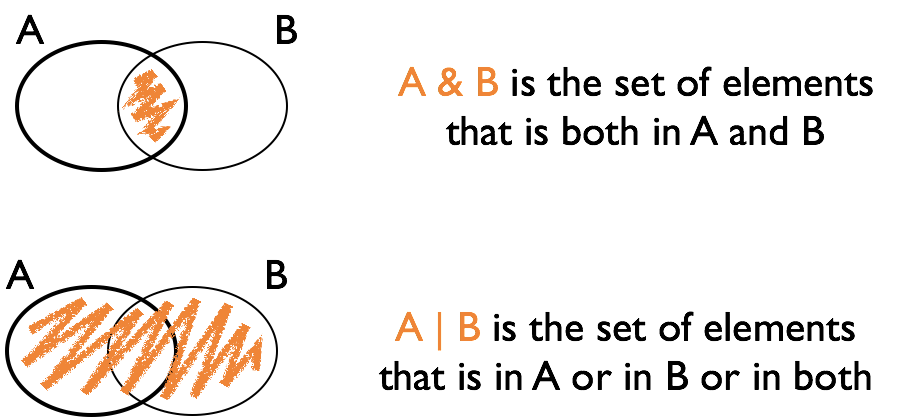class: center, middle, inverse, title-slide .title[ # DS 2020: Logical variables and Filters ] .author[ ### Will Ju ] --- --- ## Logical vectors - Vectors consisting of values `TRUE` and `FALSE` - Usually created with a logical comparison - `<, >, ==, !=, <=, >=` - `x %in% c(1, 4, 3, 7)` - Used in `subset` or `dplyr::filter` --- ## Combining logical expressions - `&` and `|` are the logical *and* and *or* - `!` is the logical negation - use parentheses () when linking expressions to avoid mis-interpretation --- ## Logical Operations  --- class: inverse ## Your turn Define vector `a` to be `a <- c(1, 15, 3, 20, 5, 8, 9, 10, 1, 3)` Find the expression for the logical vector that is TRUE where `a` is: - less than 20 - squared value is at least 100 or less than 10 - equals 1 or 3 - even <br> Hint: have a look at the help for the operator `%%` --- ## `filter {dplyr}` `filter` is a command of package `dplyr` `filter(data, ...)` finds subset of `data` where conditions specified by logical expression in `...` are true, e.g. - `filter(fbi, year == 2014)` - `filter(fbi, type == "larceny", state %in% c("Iowa", "Minnesota"))` multiple expressions are implicitly combined by a logical and `&` Note that the command `subset` works very similarly. Caution! there is another function called `filter` in the `stats` package. Use `::` to make sure you use the right one: `dplyr::filter` --- class: inverse ## Your turn Use the `fbi` data from the `classdata` package - Get a subset of all crimes in Iowa, Plot incidences/rates for one type of crime over time. - Get a subset of all crimes in 2020. Plot the number or rate for one type of crime by state. - Get a subset of the data that includes number of homicides for the last five years. Find the rate of homicides, extract all states that have a rate of greater than 90% of the rates across all states, and plot (Hint: `?quantile`). Extra credit (1 point): submit your code (regardless of whether it works or not) in Canvas (yourturn-checkin-2). --- ## Information extraction: useful commands Number of records in a data set: ``` nrow(dataset) ``` Quantiles: ``` quantile(variable, probs=0.001, na.rm=T) ``` Find all indices for which an expression is TRUE: ``` which(logical variable) ``` Retrieve index of maximum/minimum value: ``` which.max(variable) which.min(variable) ``` --- class: inverse ## Your turn Use the `fbi` data object to answer the following questions: - how many reports of Burglaries are there for California? - for any of the violent crimes, which state had the highest rate (and for which crime) in 1980? in 2020? Use the `fbiwide` data object to answer the following question: - in how many states in 2011 were there more vehicle thefts than robberies? (which states are those?)